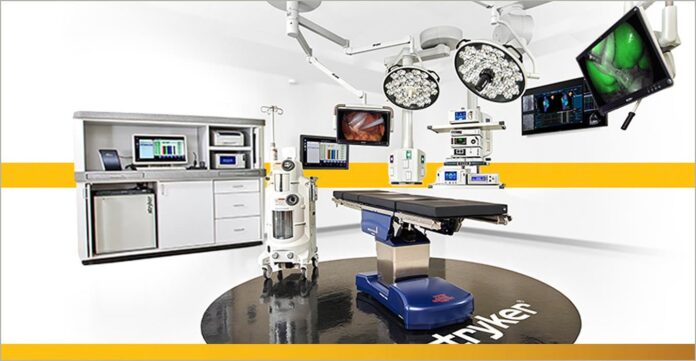Stryker is a medical device and equipment manufacturer that features a wide portfolio of devices falling under orthopedics, MedSurg (medical equipment products and surgical navigation systems), and neurotechnology. Their customer segments categorize themselves into healthcare facilities (hospitals, clinics, medical labs, and specialist care units), medical professionals (physicians, surgeons, and specialist medical professionals), and medical distributors.
The revenue that Stryker attains is primarily from the the sale of its products with secondary revenue stemming from service solutions such as planning and design service that is conducted in over 100 countries globally– though their primary location is in the United States for which 71.5% (as of 2015) of their revenue stemmed from.
Stryker is able to contribute value to their customers through its reputation and long industry standing in addition to its proprietary technologies and designs, its wide array of products, its industry expertise, and its international reach.
Analysis
After I had chosen to analyze Fitbit’s business model to see how a wearable technology company earns revenue and engages its customers, I had thought to compare it to a company that was a little more niche in terms of its products and amount of specialization and chose Stryker. During a meeting with Battelle, we found out that the NeuroLife sleeve was not a product associated with any larger medical company quite yet, though the plans to license out the product to a medical company like Stryker was in Battelle’s plan 3 years out.
With the context that the sleeve was to be given to a larger medical company such as Stryker, I decided to analyze their business model in order to see how this would work in the company’s portfolio and see how things would work out in the long run for the sleeve.
Stryker is then the primary point of sale for the sleeve as its main distributor with their clientele comprising of healthcare facilities and medical professionals would then be the ones that are using or prescribing the sleeve to their patients. Understanding the context of the sleeve and how it will integrate itself into business is insightful as the means of developing adjacent products or systems to go alongside the sleeve will then have to be developed and supported by Stryker– thereby opening more venues for design conjectures and opportunities.
With this research, I’ve come to understand the larger system that the sleeve is a part of and the design opportunities that can arise when examining the point of manufacture/distribution. I think that next steps would be to conduct a cursory look of Stryker and other medical device company portfolios to see how various peripherals and support systems are developed alongside the main product in order to justify any design of peripherals later down the road.




